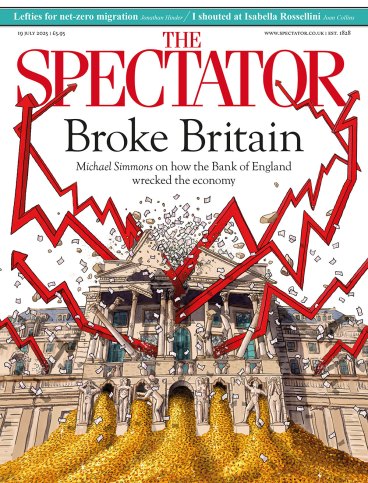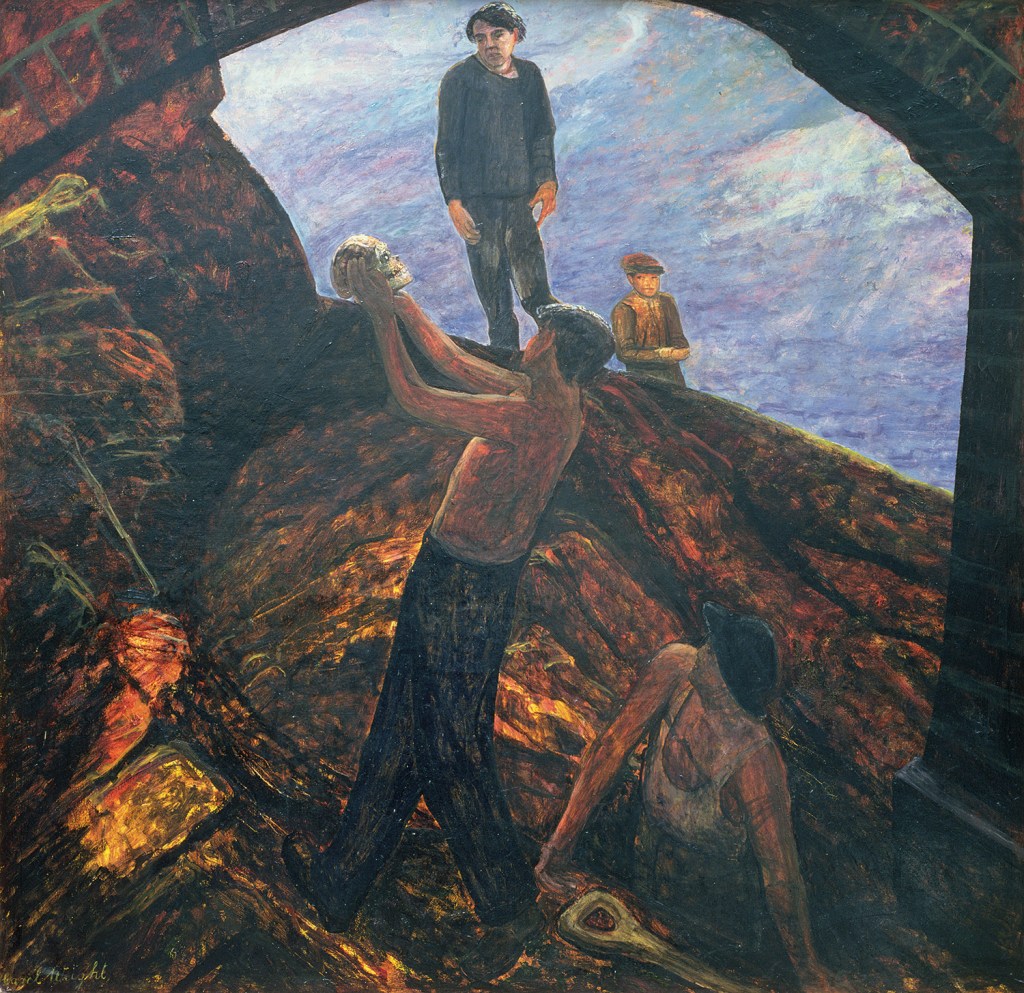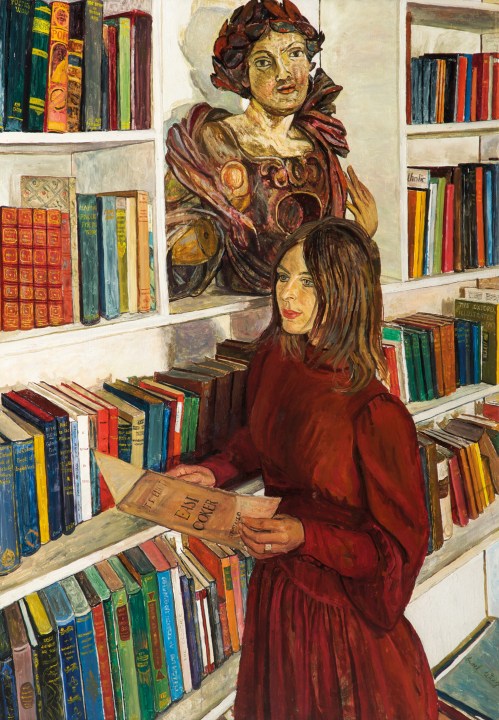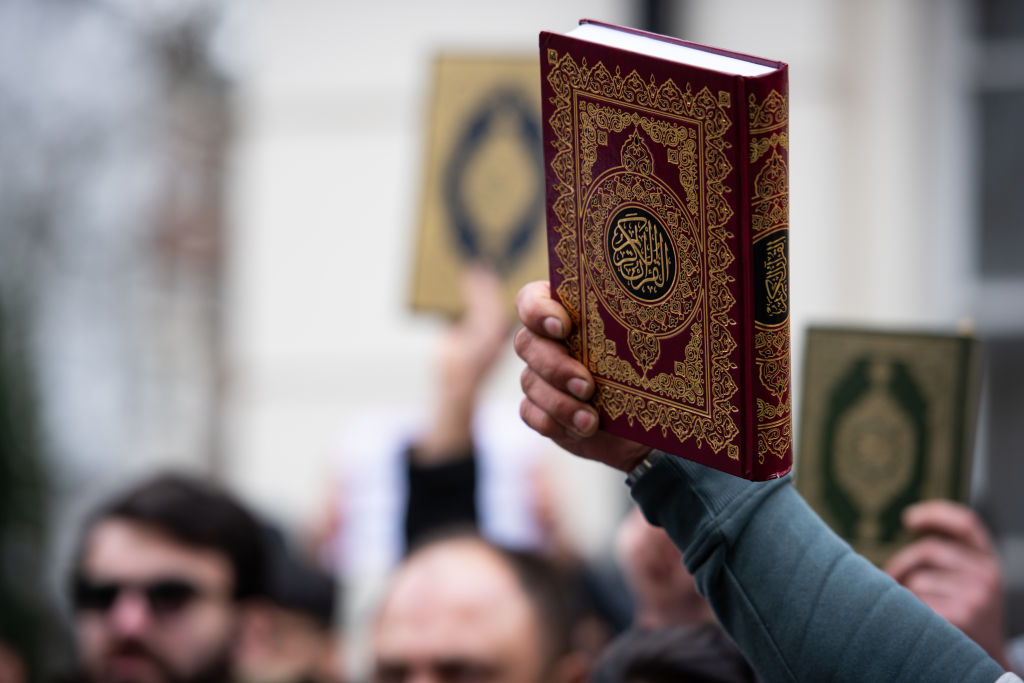
Carel Weight, the inimitable painter of London life and landscape, was my godfather. I remember a clownish-faced elderly man with an air of mild quizzical enquiry, who for 16 years held one of the most important teaching jobs in Britain. In charge of painting at the Royal College of Art when David Hockney passed through, Weight taught the ‘Pop People’ (as he called them) – Peter Blake, Patrick Caulfield and R.B. Kitaj – as well as Bridget Riley, Leon Kossoff, John Bellany and the singer-songwriter Ian Dury. Weight himself never received the critical recognition he deserved. He was overshadowed to a degree by abstract expressionism, which crash-landed from the US in the 1950s. His day may yet come. David Bowie was a collector, as was Kenneth Clark, the Civilisation presenter and National Gallery director.
A delightful new memoir, The Worlds of Carel Weight by his close friend Robin Bynoe, exalts an unfairly neglected master. All Weight’s artist associates and Royal College alumni are here, from Francis Bacon, John Minton and Olwyn Bowey to the Soho habitué Diana Hills, the long-suffering lover of the kitchen-sink painter John Bratby. Weight’s star pupil for a while was my aunt Maret Haugas, a refugee from the Baltic who in 1960 was diagnosed with schizophrenia. Weight sent Maret many letters and postcards enquiring after her welfare: ‘I always knew that you had a very great talent which wanted to get out.’ He was, as Bynoe says, ‘avuncular’.
Beneath his bear-like amiability, though, Weight was a troubled man. His imagination was haunted by ghosts. As a child in the early 20th century he was sent to live with a foster mother in World’s End at the shabby extremity of Chelsea. He was also an official war artist in post-fascist Italy, where he painted scenes of displaced humanity on fire-blackened streets.
When he died in 1997, at the age of 88, the obituarists couldn’t quite decide what sort of painter he had been. His work suggests influences – Munch, Turner, German expressionism – yet eludes any glib art-historical category. With Walter Sickert he shared a taste for scenes of jeopardy in dowdy, broken-down locations. ‘We are all ultimately alone,’ he liked to say. One critic called him ‘the Alfred Hitchcock of British painting’.
Weight liked women. He appointed Mary Fedden as the Royal College of Art’s first female tutor, no doubt because her still lifes were reassuringly figurative, but he was politic enough to tolerate aspects of pop and the new. His urban fantasias with their big dippers and Heath Robinsonian flying machines in some ways foreshadowed the Victorian folk oddity of Peter Blake, who revered him.
If Weight was out of sympathy with some of his intransigent pupils (William Green, for example, made giant aggressive abstracts by riding a bicycle over hardboards saturated in paraffin), he nevertheless gave them the freedom and self-confidence to explore, and the respect was mutual. Bynoe was amused to find a copy of Ian Dury’s album New Boots and Panties among Weight’s collection of Schubert and opera. ‘I particularly like the song where he says “fuck” a lot,’ he told Bynoe. The late Queen acquired at least one canvas by Weight.

Weight ‘grew up in the shadow of the impressionists’, writes Bynoe. His two portraits of Orovida Pissarro, granddaughter of the French impressionist Camille Pissarro, are unquestionably mid-20th century British masterworks, but defiantly representational. Weight was impatient of fashions and ‘movements’.

Bynoe gives a memorable picture of the rackety Victorian house where he lived in south-west London with his partner Helen Roeder. A practising Catholic, Roeder took pity on a former prostitute called Janey Winifred Hearne, who, says Bynoe, counted Graham Greene among her clients. Janey became a permanent lodger at the 33 Spencer Road house. Visitors found her an unsettling presence. She had a violent streak and on one occasion went for Weight with a carving knife. Weight’s 1961 portrait of Janey, ‘Jane 1’, shows a seated woman in funereal black with a mass of straggly dark hair. The painting suggests that the world is always on edge in Weight. The haunted, contorted figures in his work ‘remind one of nothing so much as inmates on day release’, writes Bynoe.
Weight loved London buses and with Bynoe frequented a Chinese restaurant that he liked in Putney. In his bedroom he slept under a large self-portrait by Bellany (who called Weight ‘The Prof’). Bynoe himself appears in three Weight paintings. Weight’s chief concern in his last days, says his friend, was how to escape his room in Chelsea and Westminster Hospital. ‘Have you got a car?’ he asked. ‘We’ll make a dash for it.’
Robin Bynoe’s The Worlds of Carel Weight: A Memoir of a Friendship is published by So, Yes Books.








Comments